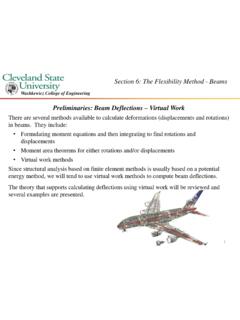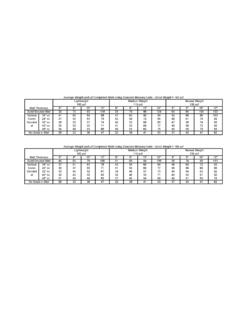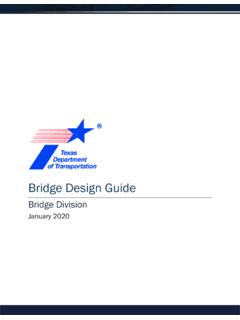Transcription of Introduction to Digital System Design
1 Introduction to Digital System Design RTL Hardware Design chapter 1 1. by P. Chu Outline 1. Why Digital ? 2. Device Technologies 3. System Representation 4. Abstraction 5. Development Tasks 6. Development Flow RTL Hardware Design chapter 1 2. by P. Chu 1. Why Digital RTL Hardware Design chapter 1 3. by P. Chu Advantages Advantage of Digital devices Reproducibility of information Flexibility and functionality: easier to store, transmit and manipulate information Economy: cheaper device and easier to Design Moore's law Transistor geometry Chips double its density (number of transistor) in every 18 months Devices become smaller, faster and cheaper Now a chip consists of hundreds of million gates And we can have a wireless-PDA-MP3-player- camera-GPS-cell-phone gadget very soon RTL Hardware Design chapter 1 4.
2 By P. Chu Applications of Digital systems Digitization has spread to a wide range of applications, including information (computers), telecommunications, control systems etc. Digital circuitry replaces many analog systems: Audio recording: from tape to music CD to MP3. (MPEG Layer 3) player Image processing: from silver-halide film to Digital camera Telephone switching networks Control of mechanical System : , flight-by-wire . RTL Hardware Design chapter 1 5. by P. Chu , Digital circuit in a wireless communication transmitter System A Error Data Data info / correction Modulation compression encryption D coding Digital implementation D Error Data de- Data De- info / correction compression decryption modulation A de-coding Digital implementation receiver RTL Hardware Design chapter 1 6.
3 By P. Chu , Digital circuit in a control System Sen A D sor actu / Controller / Plant ator output D A. set point Digital implementation RTL Hardware Design chapter 1 7. by P. Chu How to implement a Digital System No two applications are identical and every one needs certain amount of customization Basic methods for customization General-purpose hardware with custom software General purpose processor: , performance-oriented processor ( , Pentium), cost-oriented processor ( , PIC micro-controller). Special purpose processor: with architecture to perform a specific set of functions: , DSP processor (to do multiplication-addition), network processor (to do buffering and routing), graphic engine (to do 3D.)
4 Rendering). RTL Hardware Design chapter 1 8. by P. Chu Custom hardware Custom software on a custom processor (known as hardware-software co- Design ). Trade-off between Programmability, Coverage, Cost, Performance, and Power consumption A complex application contains many different tasks and use more than one customization methods RTL Hardware Design chapter 1 9. by P. Chu 2. Device Technologies RTL Hardware Design chapter 1 10. by P. Chu fabrication of an IC. Transistors and connection are made from many layers (typical 10 to 15 in CMOS) built on top of one another Each layer has a special pattern defined by a mask One important aspect of an IC is the length of a smallest transistor that can be fabricated It is measured in micron ( m, 10-6 meter).
5 , we may say an IC is built with m process The process continues to improve, as witnessed by Moore's law The state-of-art process approaches less than a fraction of m (known as deep sub-micron). RTL Hardware Design chapter 1 11. by P. Chu Classification of device technologies Where customization is done: In a fab ( fabrication facility): ASIC (Application Specific IC). In the field : non-ASIC. Classification: Full-custom ASIC. Standard cell ASIC. Gate array ASIC. Complex field programmable logic device Simple field programmable logic device Off-the-shelf SSI (Small Scaled IC)/MSI (Medium Scaled IC) components RTL Hardware Design chapter 1 12.
6 By P. Chu Full-custom ASIC. All aspects ( , size of a transistor) of a circuit are tailored for a particular application. Circuit fully optimized Design extremely complex and involved Only feasible for small components Masks needed for all layers RTL Hardware Design chapter 1 13. by P. Chu Standard-Cell ASIC. Circuit made of a set of pre-defined logic, known as standard cells , basic logic gates, 1-bit adder, D FF etc Layout of a cell is pre-determined, but layout of the complete circuit is customized Masks needed for all layers RTL Hardware Design chapter 1 14. by P. Chu Gate array ASIC. Circuit is built from an array of a single type of cell (known as base cell).
7 Base cells are pre-arranged and placed in fixed positions, aligned as one- or two- dimensional array More sophisticated components (macro cells). can be constructed from base cells Masks needed only for metal layers (connection wires). RTL Hardware Design chapter 1 15. by P. Chu Complex Field Programmable Device Device consists of an array of generic logic cells and general interconnect structure Logic cells and interconnect can be programmed . by utilizing semiconductor fuses or switches . Customization is done in the filed . Two categories: CPLD (Complex Programmable Logic Device). FPGA (Field Programmable Gate Array). No custom mask needed RTL Hardware Design chapter 1 16.
8 By P. Chu Simple Field Programmable Device Programmable device with simple internal structure , PROM (Programmable Read Only Memory). PAL (Programmable Array Logic). No custom mask needed Replaced by CPLD/FPGA. RTL Hardware Design chapter 1 17. by P. Chu SSI/MSI components Small parts with fixed, limited functionality , 7400 TTL series (more than 100 parts). Resource ( , power, board area, manufacturing cost etc.) is consumed by package but not silicon . No longer a viable option RTL Hardware Design chapter 1 18. by P. Chu Three viable technologies Standard Cell ASIC. Gate Array ASIC. FPGA/CPLD. RTL Hardware Design chapter 1 19. by P. Chu Comparison of technology Area (Size): silicon real-estate.
9 Standard cell is the smallest since the cells and interconnect are customized FPGA is the largest Overhead for programmability . Capacity cannot be completely utilized Speed (Performance). Time required to perform a task Power Cost RTL Hardware Design chapter 1 20. by P. Chu Cost Types of cost: NRE (Non-Recurrent Engineering) cost: one-time, per- Design cost Part cost: per-unit cost Time-to-market cost loss of revenue Standard cell: high NRE, small part cost and large lead time FPGA: low NRE, large part cost and small lead time RTL Hardware Design chapter 1 21. by P. Chu Graph of per-unit cost RTL Hardware Design chapter 1 22. by P. Chu Summary of technology Trade-off between optimal use of hardware resource and Design effort/cost No single best technology RTL Hardware Design chapter 1 23.
10 By P. Chu 3. System Representation (View). RTL Hardware Design chapter 1 24. by P. Chu View: different perspectives of a System Behavioral view: Describe functionalities and i/o behavior Treat the System as a black box Structural view: Describe the internal implementation (components and interconnections). Essentially block diagram Physical view: Add more info to structural view: component size, component locations, routing wires , layout of a print circuit board RTL Hardware Design chapter 1 25. by P. Chu , structural and physical view RTL Hardware Design chapter 1 26. by P. Chu 4. Abstraction RTL Hardware Design chapter 1 27. by P. Chu How to manage complexity for a chip with 10.















